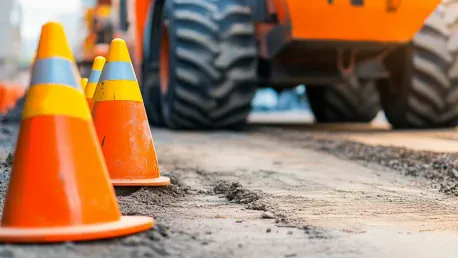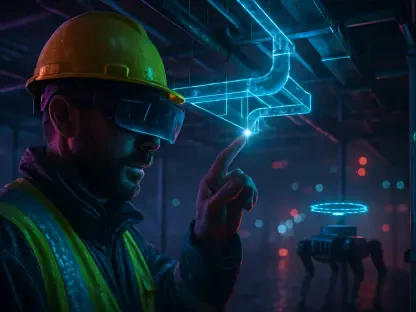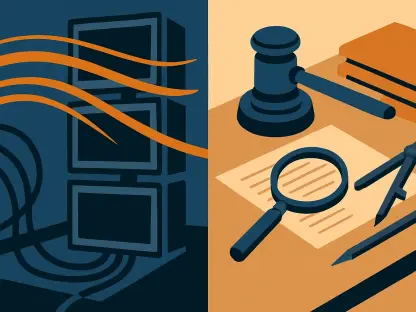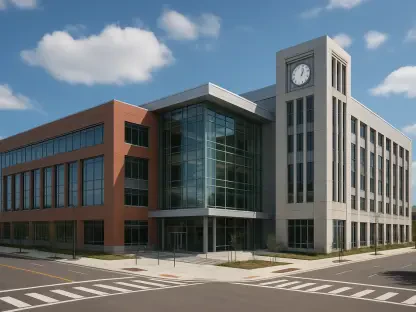The recent deadly crash on I-35 in North Austin, which resulted in five tragic deaths, has stirred a debate on the efficacy of construction zone safety protocols. This incident, and the ensuing federal investigation, shed light on critical shortcomings and possible areas for improvement in maintaining safety on one of Austin’s busiest highways.
Incident and Immediate Aftermath
On a fateful night, a semitruck driven by an allegedly intoxicated driver, Solomun Weldekeal Araya, plunged into a line of cars slowed down due to overnight construction work, resulting in a horrific collision that took five lives, including those of a baby and a child. The crash site quickly became a scene of devastation, with emergency responders rushing to the aid of the injured and attempting to piece together the events that led to the tragedy.
The accident occurred during a time when the highway had reduced its lanes from three to one, due to ongoing repaving activities, under the I-35 Capital Express Project. The sudden narrowing of the highway created a bottleneck that left many drivers vulnerable, particularly when faced with the erratic behavior of an impaired driver. The ripple effect of this incident extended beyond the immediate loss of life, raising questions about whether current safety measures in construction zones are adequate to prevent such catastrophes. This singular event has become a pivotal case study in understanding the complexities and challenges of maintaining road safety amid large-scale infrastructure projects.
Launch of Federal Investigation
In response to the crash, the National Transportation Safety Board (NTSB) initiated an on-site investigation to delve into the root causes and propose prevention strategies for future incidents. The investigation team, led by Kenny Bragg, began by thoroughly examining the crash site, reviewing traffic patterns, and interviewing witnesses. One of the key areas of focus for the NTSB was the background of Solomun Weldekeal Araya, including his driving history, employment records, and potential contributing factors to his alleged intoxication.
Bragg underscored that understanding the exact sequence of events and establishing clear causality is crucial. The investigation will scrutinize the truck driver’s record and the safety measures in place at the construction zone. The NTSB’s goal is not only to understand what went wrong but also to develop recommendations that could prevent similar tragedies in the future. This involves a meticulous examination of the safety protocols used within the construction zone and how they were communicated to drivers. With a comprehensive approach, the NTSB aims to provide actionable insights that can lead to meaningful changes.
Construction Project Context
The I-35 Capital Express Project, the largest highway expansion in Austin’s history, is a decade-long venture expected to culminate in 2033. This behemoth project is divided into three sections: North, Central, and South, each segment undergoing extensive repaving and reconstruction activities simultaneously. The chaos of construction has become a daily reality for Austin residents and commuters, who often face delays and detours, particularly during peak construction times. Despite these inconveniences, the long-term aim is to create a more efficient and safer highway system that can accommodate rapidly growing traffic volumes.
TxDOT’s Brad Wheelis has indicated that fatal crashes instigate a thorough review of current safety protocols and necessitate an assessment of potential enhancements. According to Wheelis, each tragic incident serves as a sobering reminder of the inherent risks involved in such massive undertakings. The agency is committed to continuously improving safety measures based on the latest data and findings, ensuring that every possible precaution is taken to protect both road workers and motorists. The I-35 project serves as a testament to the balance between progress and safety, a challenging endeavor that requires constant vigilance and adaptation.
Evaluating Safety Protocols
David K. Hale, a civil engineer, emphasizes the significance of queue warning systems in alerting drivers to slowed traffic ahead. Hale explains that these systems use sensors and variable message signs to provide real-time updates about traffic conditions, significantly reducing the risk of sudden collisions caused by unexpected slowdowns. These systems are meant to reduce the risk of collisions from bottlenecks, a common occurrence in construction zones. By warning drivers well in advance of slow-moving or stopped traffic, accidents like the recent crash could potentially be averted.
While TxDOT has affirmed the existence of a queue warning system for the I-35 project, it remains ambiguous whether it was active and effective during the night of the crash. The efficacy of such systems is contingent upon consistent maintenance and timely activation, highlighting the need for rigorous operational protocols. Ensuring these systems function correctly at all times is a critical aspect of preventing future tragedies. As technology progresses, these safety measures could become increasingly sophisticated, incorporating predictive analytics to anticipate traffic patterns and further minimize risks.
Perspectives from Truck Drivers
Seasoned truck driver Gabriel Leos offers valuable insights into the realities faced by those who navigate construction zones regularly. Leos points out that professional drivers should be fully capable of navigating construction zones safely. He notes that the incident could have been avoided with responsible driving. Drawing from years of experience, Leos emphasizes that adherence to basic safety principles, such as maintaining a safe following distance and driving at appropriate speeds, is paramount. However, he also acknowledges the pressures and challenges unique to the trucking industry, which can sometimes compromise these safety ideals.
Leos also touched on systemic issues, such as the prevalent pay-by-mile structure for truck drivers, which might pressurize them into dangerous driving behaviors to cover more ground quickly. This compensation model incentivizes speed over safety, creating a perilous cycle of risk-taking that can have dire consequences. Leos advocates for a shift towards hourly wages, which he believes would alleviate the pressure to rush, allowing drivers to prioritize safety without the constant worry of income loss. Addressing these underlying systemic issues is imperative for fostering a safer environment on highways like I-35, where construction zones add another layer of complexity.
Broader Safety Concerns
There is a growing consensus on the necessity for more stringent and reliable safety measures in construction zones, including enhanced queue warning systems and improved signage and striping for clear lane demarcation. Stakeholders from various sectors agree that these improvements are not merely about compliance but about preventing loss of life. Enhanced warning systems and better visible signage ensure that drivers are well-informed, reducing the likelihood of sudden, dangerous maneuvers.
The examination extends to the employment practices within the trucking industry, suggesting that switching to an hourly pay structure might reduce reckless driving and promote road safety significantly. By eliminating the financial incentive to speed, truck drivers can focus on navigating safely through construction zones. This reform could lead to a culture shift within the industry, where safety is truly prioritized over expedience. Additionally, ensuring that trucking companies adhere to safety regulations and are held accountable for lapses is crucial for enforcing these practices consistently.
Potential Solutions and Recommendations
Enhanced queue warning systems should be universally deployed in construction zones, particularly in areas susceptible to bottlenecks and heavy traffic flow. The integration of advanced technologies, such as real-time traffic monitoring and variable message signs, can significantly improve communication with drivers. These systems should be rigorously tested and maintained to ensure they are functional at all times, providing consistent and reliable warnings to motorists.
More prominent and numerous signage, along with clear and consistent roadway markings, are crucial to guide drivers safely through construction zones. Effective signage can reduce confusion and help drivers make safe decisions under stressful conditions. Innovative approaches, like dynamic lane markings that change to reflect current traffic patterns, could further enhance safety. These measures would create a more predictable and navigable environment, reducing the likelihood of accidents in high-risk areas.
Systemic Reforms in Trucking Industry
The recent tragic accident on I-35 in North Austin, leading to the unfortunate loss of five lives, has sparked a significant discussion about the effectiveness of construction zone safety measures. This devastating event has prompted a federal investigation, which highlights critical areas of concern and potential improvements in safety protocol for one of Austin’s busiest roadways.
The crash underscores the urgent need to reevaluate how construction zones are managed, particularly in high traffic areas. Safety officials and civic leaders are now under increasing pressure to address these shortcomings in order to prevent future tragedies. The federal inquiry aims to uncover whether current safety measures were adequate and adhered to, and what systemic changes are necessary to bolster safety for both drivers and construction workers.
Residents and commuters are deeply affected by this incident, calling for immediate action to ensure such a tragedy does not recur. The dialogue around construction zone safety on I-35 has reached a critical point, demanding a thorough reassessment and more stringent safety protocols. This underscores the necessity for reliable, robust systems that can safeguard lives while maintaining the essential infrastructure in a city as dynamic and growing as Austin. Overall, this tragedy could serve as a crucial turning point in how road safety is managed in the region.









